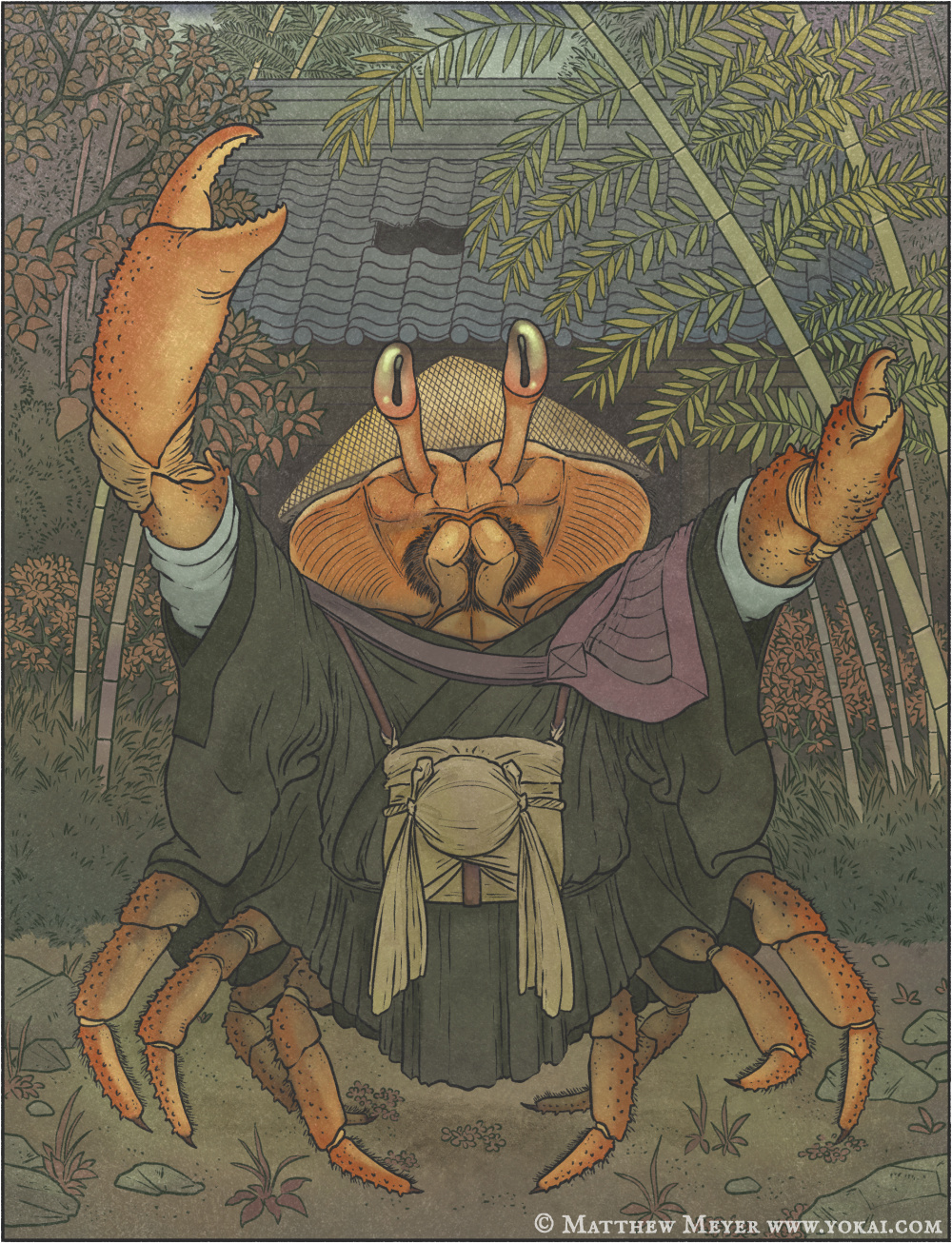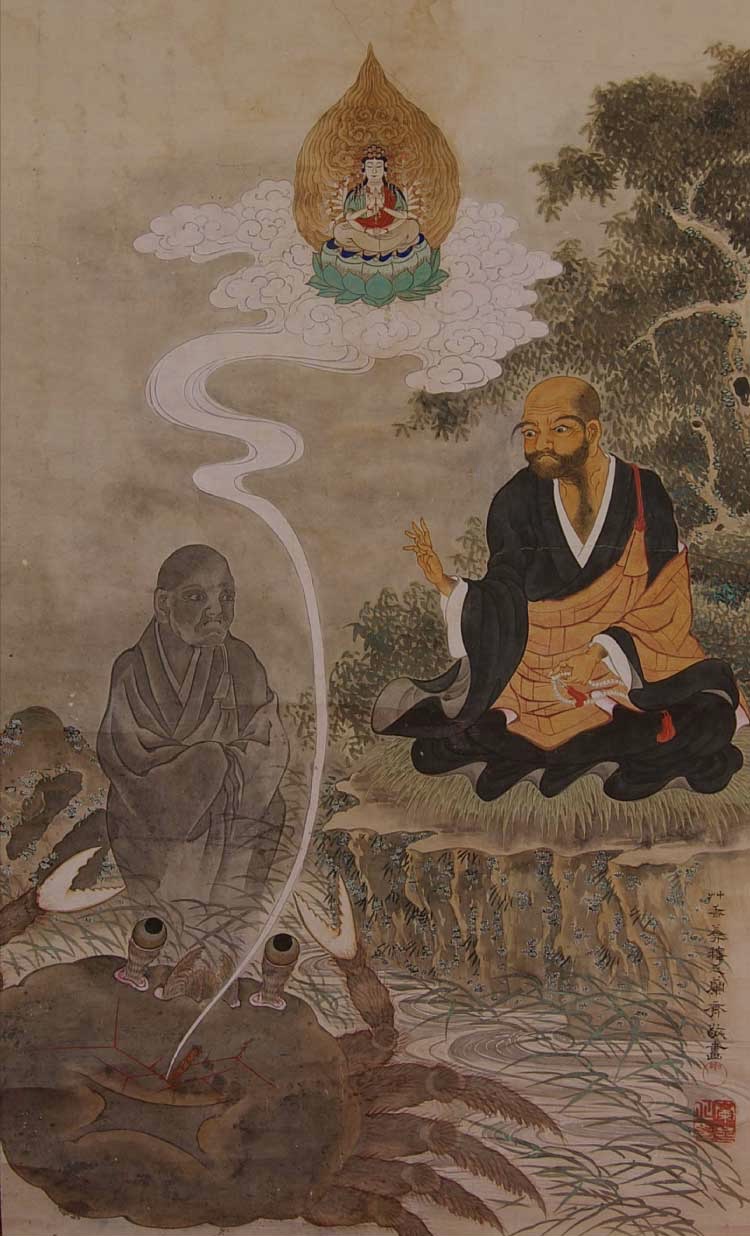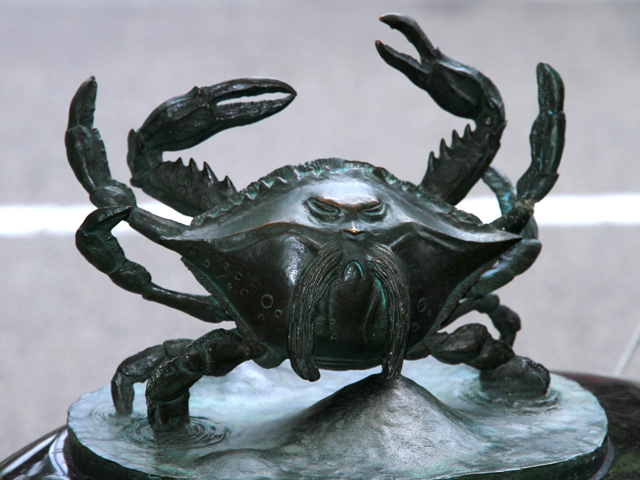Говорят, у Медузы очень красивые глаза, Странник. Посмотри и убедись, если не веришь.
Bestiary.us
энциклопедия вымышленных существБыстрый переход
- Бестиарий Сапковского Бестиарий книг Анджея Сапковского о ведьмаке, волшебные существа и расы мира Геральта.
- Бестиарий «Волчонка» Материалы портала посвящены мифологии сериала "Волчонок" (Teen Wolf), различным легендам и поверьям о вервольфах и других существах, встречаемых в сериале.
- Японская мифология и фольклор Система сакральных знаний страны восходящего солнца, включающая традиции синтоизма и буддизма, а также многочисленные народные поверья и городские легенды, содержит огромное количество ками («божество» или «дух»), ёкай («призрак» или «демон») и хэнгэёкай («звери-оборотни»).
Кани-бодзу
Кани-бодзу — краб-оборотень из японских поверий, который любит загадывать загадки и поедать недогадливых монахов
Kanibōzu — according to japanese folklore, giant crabs which disguise themselves as priests and haunt temples
Кани-бодзу — краб-оборотень из японских поверий, который любит загадывать загадки и поедать недогадливых монахов
Kanibōzu — according to japanese folklore, giant crabs which disguise themselves as priests and haunt temples
Кани-бодзу — краб-оборотень из японских поверий, который любит загадывать загадки и поедать недогадливых монахов
Кани-бодзуКраб-оборотень из японских поверий, который любит загадывать загадки и поедать недогадливых монахов по-русскиKanibōzuAccording to japanese folklore, giant crabs which disguise themselves as priests and haunt temples in english
Bake kani —
Kani no bakemono —
Kanibōzu —
Ōkani —
Бакэ-кани —
Кани-но бакэмоно —
Канибозу —
О-кани —
かにぼうず —
化け蟹 (bake kani) —
大蟹 (ōkani) —
蟹の化け物 (kani no bakemono) —
蟹坊主 —
Согласно японскому фольклору, кани-бодзу — гигантские крабы, которые оборачиваются священнослужителями и появляются в храмах. Кани-бодзу селятся в старых пустующих храмах, где нет настоятеля. Оттуда они беспокоят людей, живущих в окрестностях. Когда такой храм посещает странствующий монах или туда назначается новый настоятель, перед ними возникает кани-бодзу и требует, чтобы они отгадали загадку. Если монах не может ответить правильно, он будет съеден.
Легенды о кани-бодзу связаны с несколькими храмами, в том числе с Тёгэн-дзи в префектуре Яманаси, Ёдзэн-дзи в префектуре Исикава, Хонъэй-дзи в префектуре Тояма и Кампо-дзи (разрушен в 1750) в префектуре Иватэ. Легенды разнятся от места к месту, но обычно в них рассказывается о кани-бодзу, который совершает злодейства, пока его не побеждает монах — иногда после сражения. В Тёгэн-дзи даже есть камень, на котором, якобы, остались следы от клешней кани-бодзу.
Легенда о крабе-загадчике была популяризирована в пьесе жанра кёгэн — «Кани-ямабуси», которая помогла распространить эту историю по всей Японии.
Давным-давно был здесь храм, в котором один за другим исчезали монахи. Каждый раз, когда в храм отправляли нового настоятеля, он через ночь исчезал. Вскоре жители деревни начали думать, что в храме водятся злые духи. Ни один новый монах не захотел отправляться туда, и храм пришёл в запустение.
И вот однажды вечером в деревню пришел странствующий монах. Он ходил от двери к двери, ища места для отдыха, но все говорили ему идти в старый храм. Ничуть не подозревая об опасности, монах сделал, как ему было сказано, и, прибыв в храм, крепко заснул, поскольку устал с дороги.
От сна монаха пробудил странный звук неподалёку. Подняв глаза, он увидел другого монаха, стоявшего возле его постели. Монах свирепо посмотрел на него и загадал загадку: «Кто имеет восемь ног, ходит вбок и смотрит в небо?»
Странствующий монах на мгновение задумался, а затем ответил: «Ты — краб!» Потом быстро ударил странного монаха своим посохом. Напуганный внезапным нападением, странный монах сбросил свою личину и превратился в большущего краба. После чего боком выскочил из храма. Странствующий монах метнул в краба свой посох и расколол ему панцирь, но крабу удалось удрать.
Наутро жители деревни пришли в храм, чтобы посмотреть, жив ли ещё странствующий монах. Тот велел им осушить пруд позади храма, потому что в нем жил ё:кай. Когда воду осушили, то обнаружили тело огромного краба с треснувшим панцирем. Также нашли скелеты всех монахов, пропавших в храме без следа.
После этого странствующий монах стал новым настоятелем храма. И больше там никогда не происходило ничего странного.
According to japanese folklore, kanibōzu are giant crabs which disguise themselves as priests and haunt temples. Kanibōzu move into old, empty temples which have no head priest maintaining them. From there, they harass people living in the vicinity. When a traveling priest visits such a temple, or when a new priest is dispatched to lead such a temple, the kanibōzu appears before them and demands they answer a riddle. If the priest cannot answer correctly, they are eaten.
Several temples are home to kanibōzu legends, including Chōgenji in Yamanashi Prefecture, Yōzenji in Ishikawa Prefecture, Hon’eiji in Toyama Prefecture, and Kanpōji (destroyed in 1750) in Iwate Prefecture. The tales vary from place to place, but they usually tell of a kanibōzu who commits evil deeds until it is defeated by a priest — sometimes after a battle. At Chōgenji there is even a stone which is said to bear the scars of the kanibōzu’s claw marks.
The legend of a riddle-giving crab was popularized in the kyōgen play “Kani yamabushi”, which helped to spread this legend across Japan.
Long ago, there was a temple in which priests kept disappearing one after another. Every time a new head priest was dispatched to the temple, they disappeared after one night. Soon, the villagers began to think the temple was haunted. No new priests were willing to go to there, and it fell into ruin.
Then one evening, a wandering priest came to the village. He went from door to door looking for a place to rest, but every one told him to go to the old temple. Completely unaware of the danger, the priest did as he was told and upon arriving at the temple, weary from travel, he fell fast asleep.
The traveling priest awoke from his dream to a strange sound nearby. Looking up, he saw another priest standing next to his bedside. The priest glared fiercely at him and asked a riddle: “What has eight small legs, two large legs, walks sideways, and has eyes pointing straight towards heaven?”
The traveling priest thought for a moment, and then replied, “You are a crab!” Then he quickly struck at the strange priest with his staff. Startled by the sudden attack, the strange priest shed his disguise and became a gigantic crab. It scuttled sideways out of the temple. The traveling priest threw his staff at the crab, cracking its shell, but it managed to escape.
In the morning, the villagers came to the temple to see if the traveling priest was still alive. The priest told them to drain the pond behind the temple, for a yōkai lived inside of it. When the water was drained, they discovered the body of the enormous crab with its shell cracked open. They also discovered the skeletons of all the priests who went missing from the temple.
After that, the traveling priest became the new head priest of the temple. And nothing strange ever happened there again.
Статус статьиСтатус артыкулаStatus artykułuСтатус статтіArticle status:
Штучка (минимум инфы, как правило из одного источника, по существу просто попавшемуся под руку, с большой вероятностью, что больше о нем не найти)
Подготовка статьиПадрыхтоўка артыкулаPrzygotowanie artykułuПідготовка статтіArticle by:
Адрес статьи в интернетеАдрас артыкулу ў інтэрнэцеAdres artykułu w internecieАдрес статті в інтернетіURL of article: //bestiary.us/kani-bodzu

Культурно-географическая классификация существ:
Культурна-геаграфічная класіфікацыя істот:
Kulturalno-geograficzna klasyfikacja istot:
Культурно-географічна класифікація істот:
Cultural and geographical classification of creatures:
Ареал обитания:
Арэал рассялення:
Areał zamieszkiwania:
Ареал проживання:
Habitat area:
Префектура ЯманасиПрэфектура ЯманасіPrefektura YamanashiПрефектура ЯманасіYamanashi Prefecture, Префектура ТоямаПрэфектура ТаямаPrefektura ToyamaПрефектура ТоямаToyama Prefecture, Префектура ИсикаваПрэфектура ІсікаваPrefektura IshikawaПрефектура ІсікаваIshikawa Prefecture, Префектура ИватэПрефектура ИватэIwate PrefectureПрефектура ИватэIwate Prefecture, ХрамыХрамыŚwiątynieХрамиTemples
Псевдо-биологическая классификация существ:
Псеўда-біялагічная класіфікацыя істот:
Pseudo-biologiczna klasyfikacja istot:
Псевдо-біологічна класифікація істот:
Pseudo-biological classification of creatures:
Физиологическая классификация:
Фізіялагічная класіфікацыя:
Fizjologiczna klasyfikacja:
Фізіологічна класифікація:
Physiological classification:
Форумы:
Форумы:
Fora:
Форуми:
Forums:
Еще? Еще!
Бакэнэко — японская кошка-оборотень, демоническая кошка
Нэкомата — в японской мифологии, чудовищная кошка-людоед с раздвоенным хвостом
Дзинко — разновидность кицунэ мужского пола, считающаяся или превратившейся в мужчину лисицей или мужчиной, превратившимся в лиса
Итати — согласно японской мифологии, ласки или куницы, ставшие оборотнями по достижению преклонного возраста
Хамагури-нёбо — в японском фольклоре двустворчатые моллюски, которые превращаются в человеческих женщин, чтобы выйти замуж за мужчин
Каэру-нёбо — в японском фольклоре лягушки, которые превратились в женщин, чтобы выйти замуж за человека
Бакемоно-Кицунэ — по японскому фольклору разновидность кицунэ, волшебные или демонические лисы
Микэнэко — трехцветный японский кот, потенциально демонической наружности



Comments
Отправить комментарий